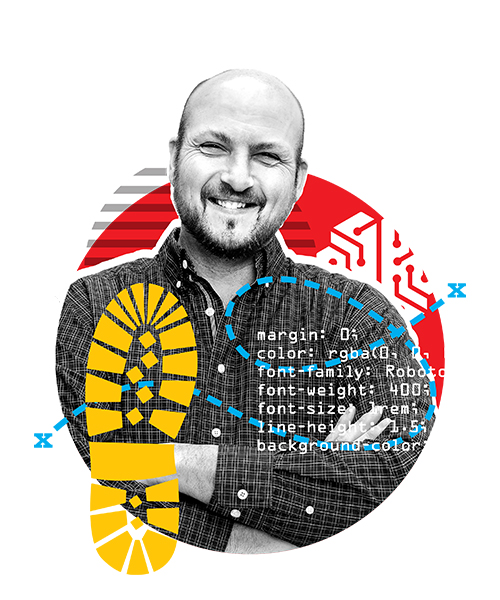
Thinking
What [em]powers MindFire – a glance at our technology
When I was asked to write a technology article, I thought this would be the easiest thing I’ve ever done. “Just write about the programming languages we use” and “Simply talk about our web development process” were the phrases calling to me. Then I realized…
Major. Freakin’. Snoozefest.
It seems like businesses often consider technology as a major burden – like it’s some unfortunate necessity. At MindFire, we embrace it because we know what all this hardware and software helps us accomplish. They’re conduits through which our [rather expansive] brand-building ideas can flow freely.
Now I could tell you that we use Microsoft Office and Adobe Creative Cloud products every working hour of the day and then some. I could also offer that we use the traditional LAMP stack for our hosting server software, consisting of Linux, Apache, MySQL and PHP.
But what does this information tell you? Not a whole lot. Let’s go deeper and answer a more important question:
Why?
At MindFire, we aim to be the best, not only because our clients expect it, but because that’s who we are at our core; we’re not interested in second place. To achieve this goal, we need to be backed by the best technology, and that’s what I’m writing about today, with a focus on the “Why?”
I’ll split this up into our core creative departments – design, copywriting and interactive – and provide a little overview of the technology used in each, along with why we chose it.

Design
Our designers are transformers in multiple senses of the word. Not only do they transform a blank canvas into something exquisite, but they transform themselves throughout the creative process by truly immersing themselves in the brand they’re developing.
Adobe’s InDesign, Illustrator, Photoshop and Premiere software provides them the unfettered ability to translate into digital format those ideas that are found in the deep reaches of their minds where the truly original creativity takes place and where brand development excels.
Being subscribed to Adobe’s Creative Cloud gives them access to the latest versions of software where they can use new features like Illustrator’s Global Editing, Photoshop’s more advanced Content-Aware functionality and InDesign’s improved font display to enhance their productivity.
Copywriting
For those who create with words, we’re using the Microsoft Office suite. Its newer collaboration features and time-tested ease of use have proven to be paramount in the quest for uninterrupted invention of thought-provoking writing. Couple this with deep integration into our corporate network and we have a proper platform for our editorial workflow.
Office isn’t limited to the über-creative folks. Our account executive, marketing and administrative teams use Excel and PowerPoint extensively, and we all use Outlook and Teams for communication.
With a direct tie-in to our local Windows server running Active Directory, all these pieces fit together seamlessly and securely and will continue to do so as we branch out into SharePoint for external client access.
Interactive
There is no limit to the number of ways you can develop a website. From initial development in Notepad++, PhpStorm, Visual Studio, Eclipse or Coda to build/automation tools like Grunt, Gulp, webpack or Yeoman, it’s easy to get lost in the sea of software available; there’s no perfect system. I use a variety of tools but find myself coming back to Dreamweaver for simple coding due to familiarity and, more recently, Git integration (versioning/change tracking).
Luckily, it’s a little easier to select a target development environment. WordPress is currently our choice. It’s not just blogging software anymore; it has matured into a stable application used for editing and displaying content and is used by large organizations like Sony and Disney.
For hosting web sites, we’ve chosen Steadfast Networks’ datacenter in Chicago due to its speed, Internet connectivity, redundancy as well as its geographic location in relation to our clients and their primary customer base. Along with the hosting server software mentioned earlier, the datacenter’s location is an important component of a well-rounded hosting setup to minimize latency (delay) to the primary users of the websites.
Conclusion
No organization wants to be limited by technology and we’re no exception. The choices we’ve made empower us to deliver top-notch creative for our clients and keep them coming back for more – and for that, we are truly appreciative of both our clients and the technology.
Click here to see the results of our technology at the hands of talented folks.

